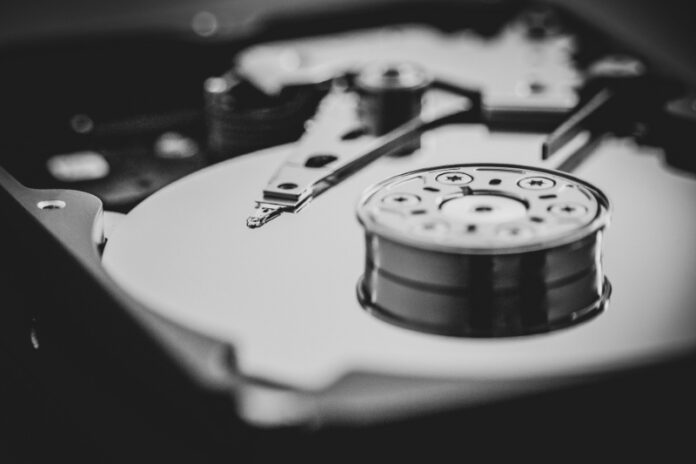The data explosion era has brought the tech sector to a critical juncture, where traditional storage solutions are hitting their limits. Conventional hard drives just aren’t cutting it anymore, pushing the need for smarter, more flexible solutions.
Seagate Technology aims to address this by pushing the boundaries of areal density in storage technology. But they’re not just trying to keep up with the times; they seek to change how data centres cope with the overwhelming tide of digital information.
Frontier Enterprise caught up with Ban-Seng Teh, Seagate’s Executive Vice President and Chief Commercial Officer. In the interview, Teh sheds light on the next steps in data storage and Seagate’s efforts to navigate the vast ocean of digital data.
Transforming hard disk production
The process of making hard disks is complicated. The components inside the drive – such as the motor, media recording, and controlling chip – each require different technology and production processes.
Sometimes, Teh noted, it takes hundreds of steps to produce a single component.
“We deal with some of the most complex nanoscale recording technologies and material science on the planet. So naturally, using the advanced technologies and applications to drive efficiency and quality is always crucial for us in our operations,” he said.
One area where Seagate seeks to innovate amid today’s data explosion is the adoption of AI within their manufacturing process.

Seagate started using AI in their factories in 2019 for predictive equipment maintenance and malfunction analysis. According to the Seagate CCO, this measure was intended to prevent production shutdowns.
The scope of Seagate’s AI use later expanded to include defect detection, which is said to help with quality control – and help it did.
“Our project OPICA—Optical Inspection with Centralised Analysis, is the cornerstone for implementing high-volume AI analytics in our manufacturing,” said Teh. “It employs a no-code approach to deep learning for identifying production defects, preventing them from moving downstream. Implementing this solution has yielded a return on investment of up to 300%.”
Teh believes that data explosion is one of the biggest challenges that Seagate has faced, and this led to a large-scale deployment of mass storage solutions.
“Our global factories are producing over 30 TB of data daily, and much of this data needs to be retained for analysis, machine learning algorithms, and AI decision-making,” he shared.
Specifically, at Seagate’s Singapore Woodlands smart manufacturing facility, total data collection has increased from 1.8 petabytes (PB) in 2021 to 3.6 PB in 2022. Teh highlighted that this figure is expected to nearly double to 7 PB by 2024, driven by the expanded use of sensors and data collection points throughout the manufacturing operations.
Misconceptions in cloud storage
The shift towards cloud-based solutions has been met with enthusiasm and a fair share of misconceptions, particularly regarding the integration of high-capacity drives.
“What customers usually see is the capacity on the label,” Teh observed. He pointed out a common tendency to equate data centre capacity with the sheer number of hard drives. A method that, while effective in scaling, may not be the most efficient.
Teh advocates for a more nuanced approach, emphasising areal density over sheer volume. “Areal density — how much data each disk can store — is key to maximising storage efficiency and tackling space, power, and budget constraints,” he stressed.
This distinction brings to light two primary strategies for enhancing hard drive capacity: the addition of components as per perpendicular magnetic recording (PMR) technology, and the focus on improving areal density.
Teh warns of the costs and environmental impact associated with the former, advocating for the latter as a smarter, more sustainable choice.
By prioritising areal density, Teh argues, data centres can achieve more with less — storing more data in the same physical space, reducing power usage, and fostering sustainability.
This strategic focus, he asserts, not only lowers operational costs but also significantly cuts down power consumption per terabyte, marking a pivotal step towards efficient and responsible data management.
Addressing the triple threat
The Seagate executive says he expects several unique challenges from emerging data generation sources: scale, TCO, and sustainability.
“Our customers find building, operating, and expanding data centres with these objectives to be their most significant challenges,” Teh said. “With generative AI becoming more accessible and data growth exploding due to AI productisation, there’s an insatiable demand for storage.”
He cites Seagate’s Mozaic 3+ hard drive platform as a response to these challenges.
“It uses heat-assisted magnetic recording (HAMR) technology to boost storage capacity. The platform achieves areal densities over 3 TB per platter, with plans to exceed 4 TB and 5 TB per platter in the future,” Teh revealed.
He also asserts that their product can store exabytes of data without requiring additional space, power, or resources.
Considering that 90% of the exabytes stored in large data centres are on hard drives, using the highest areal density drives presents “substantial” benefits, Teh noted.
According to the Seagate CCO, elevating data density allows for more data to be stored on a single server, reducing the need for racks and decreasing floor space usage.
Teh claims that this consolidation leads to reductions in operational expenses, including costs associated with power, cooling, CPU, RAM, and floor space.
Leveraging areal density
Several scenarios stand to benefit from higher areal density, especially with the integration of generative AI and machine learning applications.
The first use case, offered Teh, is smart cities and infrastructure.
“Generative AI and machine learning are pivotal in smart city development,” he observed. “They efficiently analyse large data sets, aiding in resource allocation, infrastructure development, and public service optimisation.”
Teh adds that higher areal density can boost these technologies by improving data storage, retrieval, and analysis, which are essential for smart city operations.
Another application for higher areal density is genomic research and personalised medicine.
Teh notes the benefit of merging generative AI, machine learning, and advanced data storage for these fields. This integration is said to deepen and sharpen genetic data exploration.
“Generative AI accelerates the identification of disease markers and therapeutic targets within large genomic datasets,” he explained. “Machine learning then tailors diagnostic tools and treatments, boosting patient outcomes.”
The storage, retrieval, and analysis of massive genomic data sets are said to significantly enhance research and clinical capabilities.
According to Teh, manufacturing also greatly benefits from its use of AI and machine learning.
“By analysing the vast data produced in manufacturing processes, generative AI can spot inefficiencies, predict equipment failures, and optimise resources, thus enhancing productivity and minimising downtime,” he said.
Driving the data explosion
Further elaborating on the impact of technological advancements, Teh underscores the role of generative AI in shaping the future of data storage and management strategies.
“Generative AI, despite its remarkable advancements, remains in the early stages of development,” Teh began.
He references Gartner’s forecasts that by 2026, over 80% of enterprises will have embraced generative AI through APIs, models, or in production environments — a significant increase from less than 5% in early 2023. This growth, Teh points out, underscores the burgeoning value of data driven by AI advancements.
With 55% of organisations currently exploring generative AI in pilot or production phases, Teh anticipates a notable impact on data generation.
“This technology is expected to account for 10% of all data generated over the next two years, a substantial rise from less than 1% today,” he observed.
The escalation in data production, as AI applications grow more sophisticated, is poised to challenge the current storage capacities. IDC predicts that the creation of data will surpass storage capacity by a factor of 15, highlighting an impending storage crisis.
Yet, the narrative doesn’t end there. Teh emphasises the need for enterprises to use tools that can fully unlock the potential of this vast amount of data.
“The explosive creation of data and the ability to capture it are enabling richer customer insights and new revenue opportunities,” Teh explained, pointing to the accelerated productisation of AI.
This increasing dependency on data, however, faces hurdles such as the scarcity of essential resources like space, electricity, and budget.
Teh believes HAMR technology will grow with the growing demands of data centres. He explains that it offers a way to circumvent the limitations associated with traditional PMR technology, which is linked to higher costs, power consumption, and environmental impact.
“This technology provides cloud and enterprise data centres with a reliable, scalable, and cost-effective storage solution for the anticipated data explosion,” Teh concluded.
















